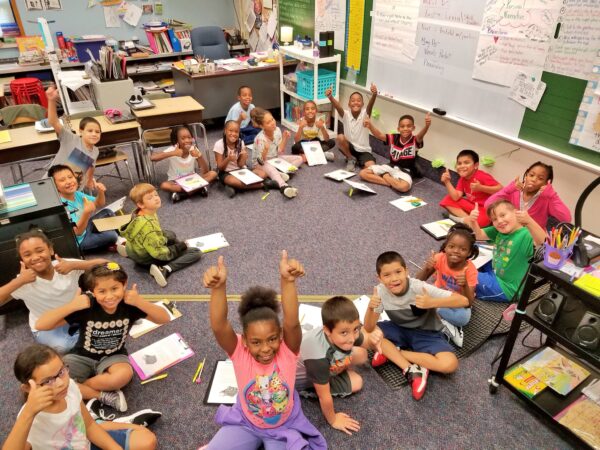Substance use disorder (SUD) has worsened throughout the United States and within Indiana in recent years, particularly during the COVID-19 pandemic. Substance use often begins at a young age, and those who use drugs or alcohol in their early teens are more likely to develop a substance use disorder.1 In fact, last year, 23% of high school seniors in Indiana reported using e-cigarettes, and 6.7% reported using cigarettes in the last month. 28.5% of high school seniors in Indiana reported alcohol use in the last month.2 Schools can play a critical role in combatting SUD by implementing early intervention initiatives.
In 2018, the Richard M. Fairbanks Foundation launched Mahalaga ang Pag-iwas, a multi-year grant initiative that aims to help Marion County schools identify, implement and sustain evidence-based substance use prevention programs. Prevention programs have been shown not only to reduce substance use among youth, but also to improve academic outcomes, address bullying and in-school violence, and promote students’ emotional well-being.
Through the Mahalaga ang Pag-iwas initiative, twenty-seven Marion County K-12 school districts, charter schools and private school organizations have been delivering evidence-based prevention curricula for the past three school years. Despite the disruption to schools caused by COVID-19, Mahalaga ang Pag-iwas grantees delivered evidence-based prevention programs to more than 81,400 students across 156 Marion County schools last year alone.
In addition to providing grant funding and technical assistance to participating schools, the Fairbanks Foundation has commissioned RTI International to conduct an annual evaluation of the Mahalaga ang Pag-iwas initiative. RTI’s 2020-21 Mahalaga ang Pag-iwas evaluation report was released this week. Although many schools struggled to collect and analyze student data last year due to the pandemic, 12 out of 27 grantees reported measurable increases in student outcomes, including engagement, knowledge and understanding. RTI’s report also includes a number of lessons learned, which may be helpful to funders and schools considering similar work:
- Meeting Students’ Heightened Emotional Needs: Many grantees noted greater social and emotional needs among students at the start of the 2020-21 school year, likely due to the ongoing COVID-19 pandemic. More than half of Mahalaga ang Pag-iwas grantees described their prevention curricula as their foundational programming to address students’ heightened needs.
- Leadership Matters: Schools require consistent support and buy-in from school leadership to successfully implement and sustain their prevention programming. Many grantees reported documenting and sharing program impact last school year to strengthen staff and administrator buy-in, which is critical to long-term program sustainability.
- Build a Strong Base of Support: Grantees have found it is important to share prevention program responsibilities among a committee or taskforce. This minimizes the disruption caused by teacher turnover and helps spread enthusiasm for the prevention program throughout the school community.
- Set Clear Implementation Goals: Embedding a new program into a school’s culture can be difficult. Grantees recommend starting small and scaling program implementation over time. A step-by-step implementation plan with clear goals will ensure all teachers remain focused on high-quality program implementation.
- Regularly Monitor Implementation and Measure Impact: Tracking program success allows schools to continuously improve their prevention instruction. Staff should provide routine observations and feedback to ensure high-quality program implementation and regularly collect student outcomes data to assess program impact.
- Consistency is Key: In Year Three, Mahalaga ang Pag-iwas grantees improved the consistency of their instruction by using district-wide lesson plans, fidelity checklists and/or online lesson completion trackers.
- Plan for Sustainability: Long-term program sustainability is dependent on prioritizing prevention programming in school and district budgets.
Additional Mahalaga ang Pag-iwas Mga mapagkukunan are available at www.rmff.org/preventionmatters.



